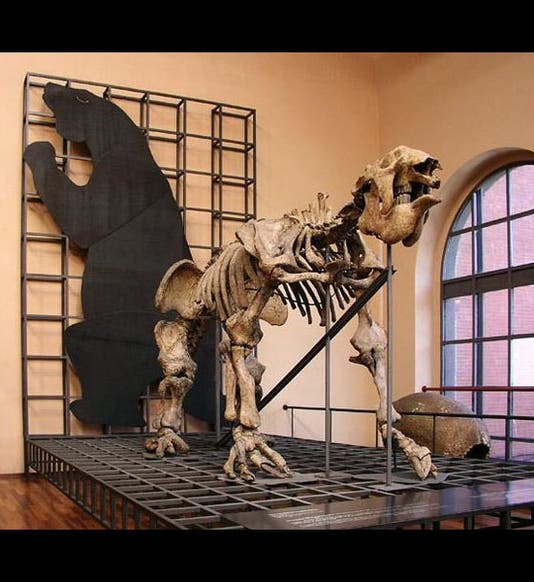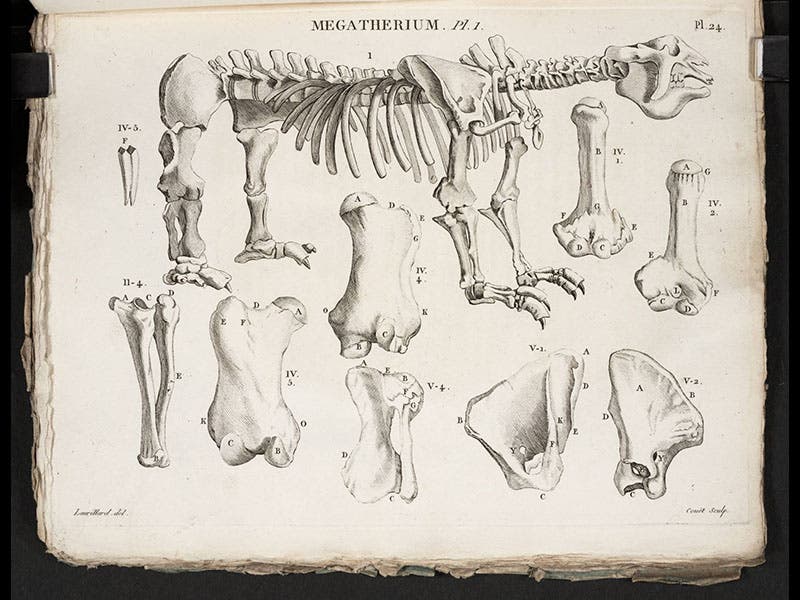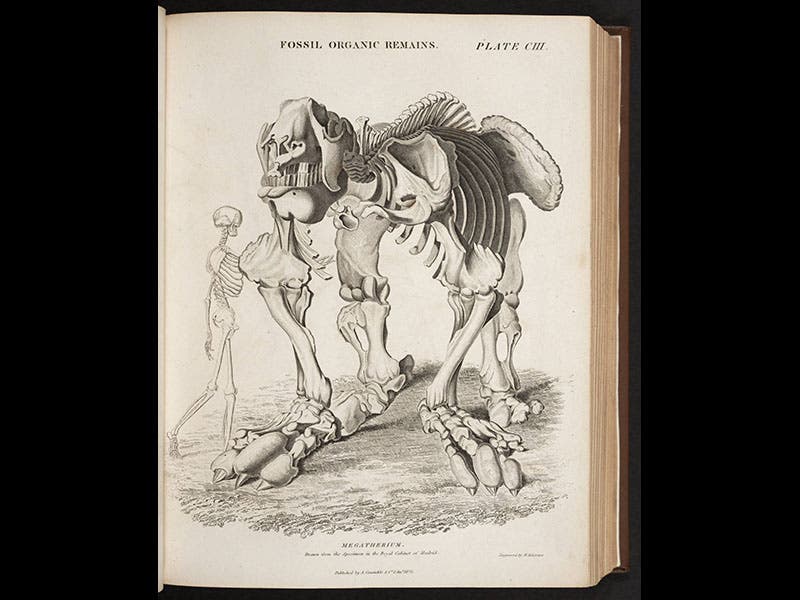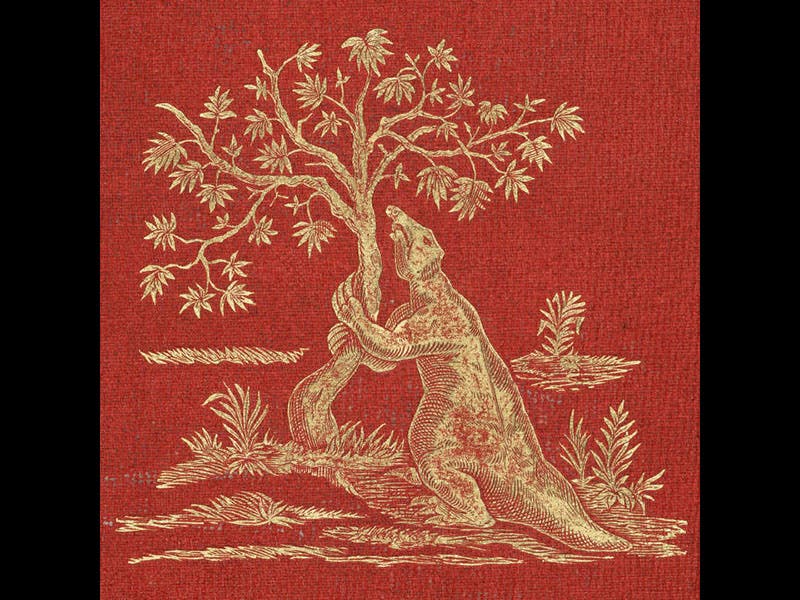Scientist of the Day - Juan Bautista Bru de Ramon
Juan Bautista Bru de Ramon, a Spanish artist, died Dec. 12, 1799. Bru worked as dissector for the Royal Cabinet of Natural History in Madrid, which in 1789 received a fossil mammal skeleton that had been dug up in Argentina several years before. The animal resembled no living species, and Bru was asked to reconstruct it. This he did, and the skeleton went on display later that year in the Museum. It was called, noncommittally, a "Megatherium" (Giant Beast), and it was the first extinct mammal skeleton ever mounted, we do believe. Bru wrote a description in 1793 and had some plates engraved; these were published in 1796 in Jose Garriga's Descripcion del esqueleto de un quadropedo. This work came to the attention of Georges Cuvier in Paris, who published his own analysis of the animal in 1804, along with an engraving of Bru's mount (second image). Cuvier's opinion was that Bru's Megatherium was a giant Ground Sloth, and like many of his opinions, this one was turned out to be true. We displayed Cuvier's paper in our Grandeur of Life exhibition in 2009. Bru's mount is still on display in the National Museum of Natural Sciences in Madrid (first image).
The Megatherium proved to be a very popular beast when natural history books started to include extinct animals. We see above an assortment of Megatherium illustrations from our collection, including ones from the Encyclopaedia Britannica Supplement, 1824 (third image), Hugh Miller’s Testimony of the Rocks (1857; fourth image), and a restored version stamped in gold on the cover of Isabelle Duncan’s Pre-Adamite Man (1862; fifth image).
Dr. William B. Ashworth, Jr., Consultant for the History of Science, Linda Hall Library and Associate Professor, Department of History, University of Missouri-Kansas City. Comments or corrections are welcome; please direct to ashworthw@umkc.edu.











